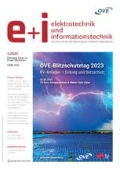Researchers have an opportunity to develop assistive applications that empower people to change unhealthy habits through monitoring their behavior. Mobile applications can enhance self-monitoring by providing real-time feedback and employing persuasive technology. The projects presented demonstrate the potential of persuasive, assistive applications for both chronically ill and healthy individuals.
Mobile Geräte durchdringen zunehmend alle Lebensbereiche. Daher haben Forscher die Möglichkeit, assistierende Anwendungen zu entwickeln, die Normalverbrauchern erlauben, ihre gesundheitsspezifischen Daten im Alltag zu verfolgen. Traditionelle handschriftliche Methoden mit Zettel und Stift können durch mobile Geräte ersetzt werden. In diesem Artikel beschreiben die Autoren zwei Anwendungen, die sowohl Gesunde als auch Kranke unterstützen.
Similar content being viewed by others
References
Booth, F. W., Chakravarthy, M. V. (2002): Cost and consequences of sedentary living: new battleground for an old enemy. President's Council on Physical Fitness and Sports Research Digest Series 3 (16).
Connelly, K. H., et al. (2005): Designing a PDA interface for dialysis patients to monitor diet in their everyday life. Proc. of HCI-International.
Ferraro, K. F., et al. (2003): The life course of sever obesity: Does childhood overweight matter? J. Gerontology, 58B (2): S110–S119.
Fogg, B. J. (2003): Persuasive Technology: Using computers to change what we think and do. Morgan Kaufmann Publishers.
Grisedale, S., et al. (1997): Designing a graphical user interface for healthcare workers in rural india. Proc. of CHI 1997. New York: ACM Press.
Hedley, A. A., et al. (2004): Prevalence of overweight and obesity among U.S. children, adolescents, and adults, 1999–2002. JAMA 291 (23): 2847–2850.
Holzinger, A. (2004): Application of rapid prototyping to the user interface development for a virtual medical campus. IEEE Software 21 (1): 92–99.
Holzinger, A. (2005): Usability engineering for software developers. Communications of the ACM 48 (1): 71–74.
Moor, K. A., et al. (2004): A comparative study of elderly, younger, and chronically ill novice PDA users. Bloomington: Indiana University.
National health report: Prevalence of overweight among children and adolescents (2002).
Siek, K. A., et al. (2006): Pride and prejudice: How chronically ill people think about food. Proc. of CHI 2006. New York: ACM Press.
Stone, A. A., et al. (2003): Patient compliance with paper and electronic diaries. Controlled Clinical Trials, 24 (2): 182–199.
The surgeon general's call to action to prevent & decrease overweight and obesity (2005).
Welch, J. L. (2003): Differences in perceptions by stage of fluid adherence. J. Renal Nutrition, 13 (4): 275–281.
Author information
Authors and Affiliations
Rights and permissions
About this article
Cite this article
Connelly, K., Faber, A., Rogers, Y. et al. Mobile applications that empower people to monitor their personal health. Elektrotech. Inftech. 123, 124–128 (2006). https://doi.org/10.1007/s00502-006-0326
Issue Date:
DOI: https://doi.org/10.1007/s00502-006-0326




